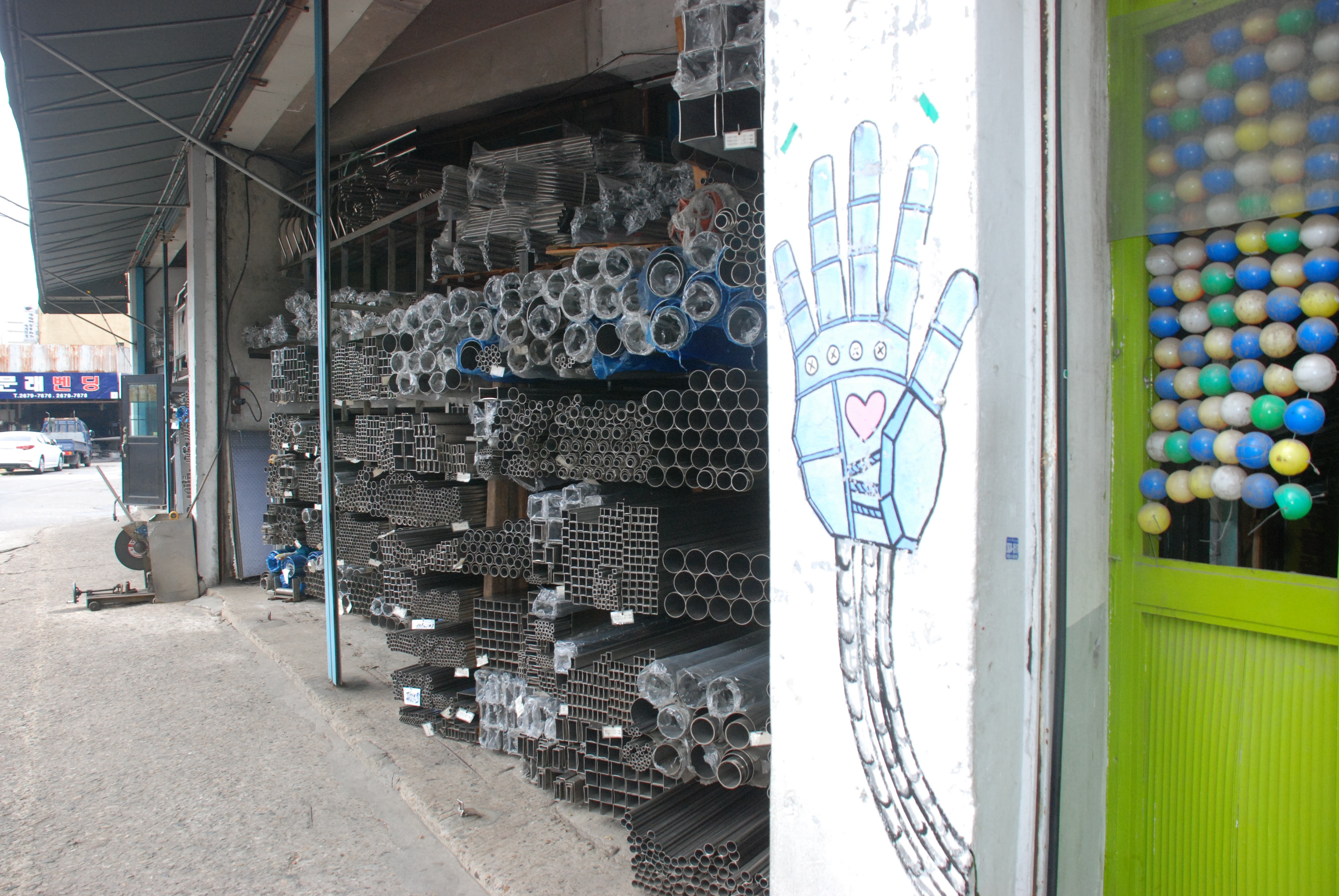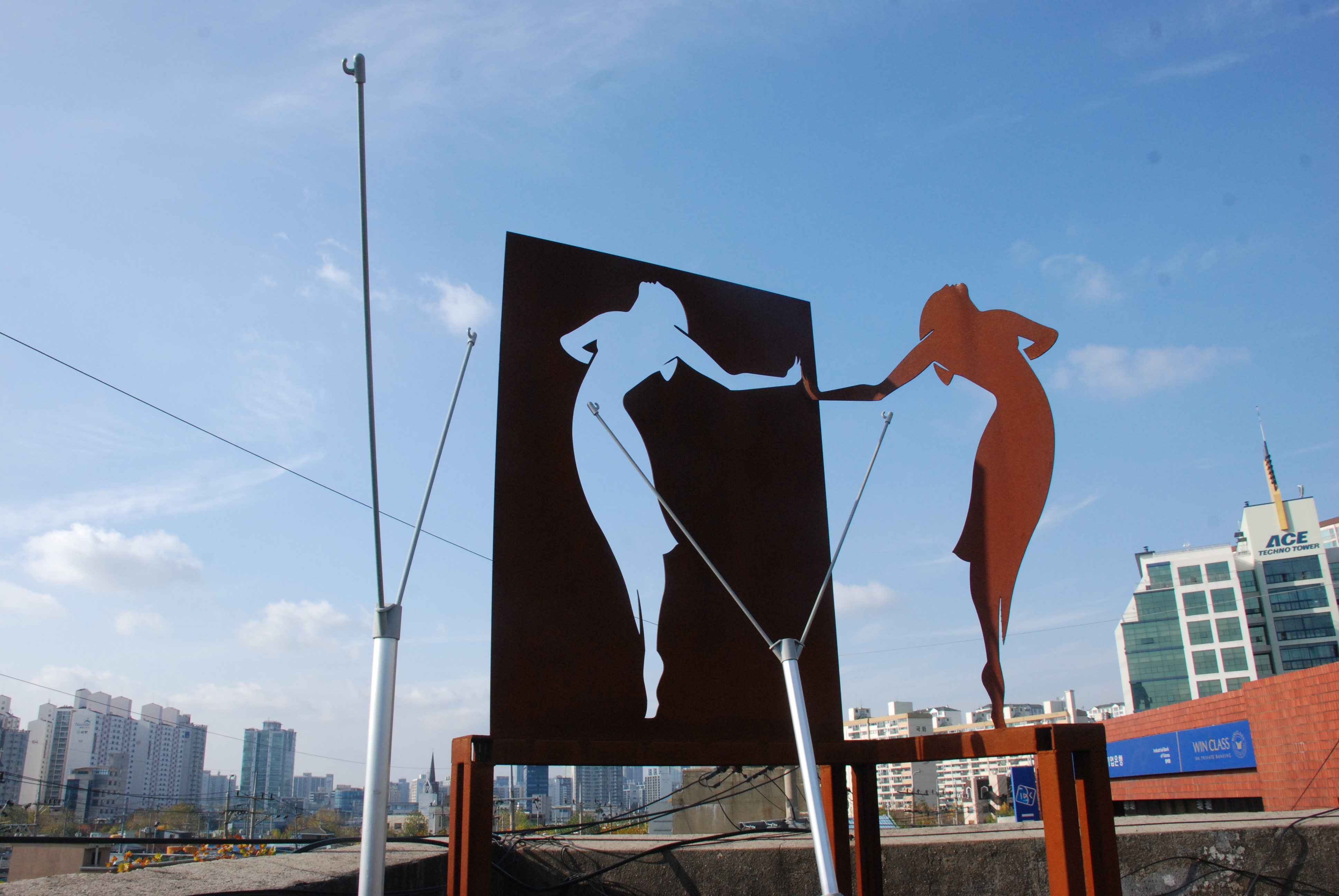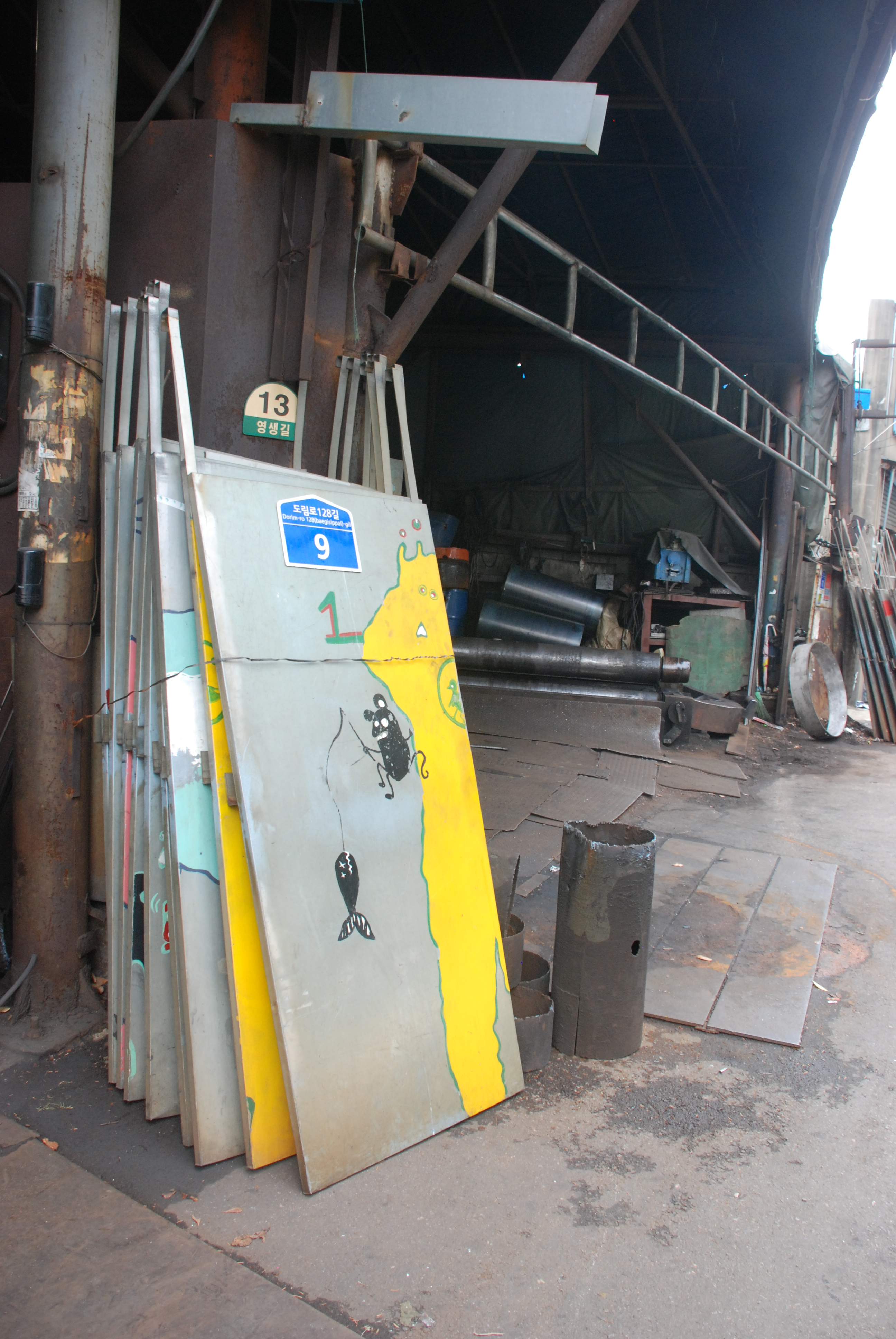Mullae Art Village is a unique village in an urban area where the energy of ironworkers and the creative heartbeat of artists coexist. Although the two groups of people don't really seem to match with each other, they live together harmoniously. The laborers work during the day time, and the artists create works of art at night. A CBT reporter saw lots of people who went out to find hidden mural paintings and sculptures in every corner of every alley as if they played a treasure-hunt game. -Ed
The reporter walked away from exit No. 7 of Mullae station and soon found a red booth which was playing the role as the landmark of the village. The reporter was in joy at the quick discovery of the booth and rushed to it to look closely. However, the reporter could not help but keep her distance from it because a thick layer of dust had built up outside and inside, and free information brochures for visitors were scattered around it. The land mark, on the other hand, seemed to represent the figure of a currently decaying village. Many iron factories were open even on a weekend. Early in the morning, laborers were welding, cutting iron pipes by machines, and carrying them with carts. The reporter felt choked by ferrous dust which fluttered in the wind and heard annoying noises from the workplace. Those conditions of the village raised doubts like, 'Is this really a colony of artists?'

First Korean SQART
Mullae Art Village is the first Korean stronghold of SQART. SQART stands for a cultural community which came into being spontaneously as artists began to congregate. Mullae Dong was an industrial empire of steel in the old days. From the 1960s, numerous factories went up in the village, which was becoming rapidly industrialized. However, the factories moved farther out of town from the 1990s, so the steel industry went into a decline. Young artists gathered into the village from the early 2000s by word of mouth that the rent was very reasonable. The artists have been renovating the old buildings into their workrooms. Recently, the village, which consists of about 70 workrooms and about 170 artists, became an art space in deed as well as in name. An artist Lee Sung-hyung said, "I sometimes draw inspiration from old people who are working like beavers in iron factories."
Mullae Artists' Ateliers
Some building entrances were full of charm and character with wall paintings and three dimensional artworks, so the reporter could know that artists' studios were located in those buildings. The reporter walked up the stairs to the second floor or the third floor to see them. The buildings looked awfully old and dark even in the daytime because they didn't get enough sunlight. Even the stench of urine from old toilets hit the reporter when going up the stairs, and there were heaps of rubbish on the stairs. In such a terrible environment, the artists have worked in a variety of fields, such as visual arts including painting, carving, installation arts, design and photography; and performing arts including dance, pantomime, street performance and drama. Most doors of artists' workrooms were shut at that time. A middle-aged man who is a tenant of the building and an owner of an iron factory informed the reporter, "The artists will come to work after 6 p.m. when most iron factories close. They are nocturnal artists," and added, "Sometimes, they borrow steel materials from me, and we work together when they need my expertise."
Green island on the ash-colored roof
Mullae artists have been tending a vegetable garden on the roof of gray buildings from last May until now. The owners of iron factories clucked their tongues at first because they thought that the artists did absurd things. Now, the owners help them to build vinyl greenhouses and to fertilize the land. Tending the vegetable garden of Mullae Dong is a project for making an urban green space. The project is reinvigorating the village, where people are getting hard-hearted, with the power of nature and art. The earthy smell is spreading from the roof to all over the town. The artists and inhabitants of Mullae Dong have joined forces to work together. After harvesting, they share vegetables and sell the crops to neighborhood restaurants or marketplaces. They sometimes throw a barbecue party, and they enjoy eating pork chunks wrapped in sesame leaves or lettuce leaves which they grow.
Mullae Art Space & Mullae Dongne
Mullae Art Space opened on January 28th, 2010. It has helped Mullae artists to create their own artwork by providing appropriate rooms and equipment. 'Mullae Dongne' is the community magazine of Mullae village. It covers not only various cultural contents of the village, but also small stories about people. The editor-in-chief of Mullae Dongne said, "I hope that the magazine can let both residents and artists communicate with each other by reporting the diverse activities of the artists."

The reporter found new murals and sculptures whenever making the circuit of the village again and again, so she looked more closely around the alleys as if playing a treasure-hunt game. Some laborers welcomed visitors including the reporter and said, "The middle-aged and the older generation often visited here in the past. These days, the younger generation comes to see the village." The novel figure of the village has attracted visitors, but people will not see the unique coexistence between the artists and the factory workers anymore as it was designated as a redevelopment area this year.
The artists and residents hosted a photo exhibition called "Back to the future" on October 20th. They displayed pictures of the village's scenery that has disappeared. Choi Young-sik, who has lived in Mullae Dong for 20 years, told the reporter, "I think that holding such cultural events makes people have strong community spirit to protect the village. I wish the progress of the redevelopment will be delayed as long as possible."
By Kong Hae-gyoung
hg31@cbnu.ac.kr


 All
All Culture
Culture






 공해경
공해경












